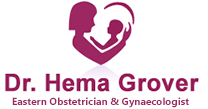Pregnancy Journey
Pregnancy is a stage in a woman’s life when she begins to develop a new human life in her womb. A typical pregnancy lasts for about 40 weeks, beginning from the first day of your last period.
What are the Stages of Pregnancy?
Pregnancy is divided into three stages called trimesters, each lasting for 12 weeks.
First Trimester (Week 1–Week 12)
The first trimester starts from the first day of your last period until 12 weeks. Your body undergoes many changes during this stage due to hormonal fluctuations. This is the stage when you first realize you are pregnant. The first symptom is the absence of your period after unprotected sex. The other changes that may follow include:
- Morning sickness, stomach upset, constipation, heartburn, cravings or distaste for some foods
- Frequent urination
- Excessive exhaustion
- Swollen breasts that may feel sore, sensitive or tender to touch, and enlargement of the nipples
- Mood swings and headache
You may experience all, some or none of these symptoms as each pregnancy is different.
Development of Your Baby during the First Trimester
The first trimester is a crucial stage in your baby’s development. This is the stage when the egg and sperm fuse and implant in the womb to form an embryo. This single-cell embryo develops into a fetus. The first indication of this is your baby’s heart beating with a regular rhythm. The brain, spinal cord, head, arms, and legs, along with the fingers and toes begin to form. The nerves start sending signals to the muscles and your baby can make a fist. Next, the eyes and eyelids form and remain closed until the 28th week. You will be able to determine the sex of your baby in this first trimester.
Second Trimester (week 13–week 28)
Any discomforts of the first trimester are usually replaced with new symptoms. In the second trimester, your abdomen continues to expand with your baby’s continuous growth. As your body changes to make room for your growing baby, you may experience:
- Pain in the back, abdomen or thighs
- Stretch marks on your abdomen, breasts, buttocks or thighs
- Skin darkness around your nipples, forehead, nose, cheeks or upper lip
- Presence of a line extending from your navel to your pubic hairline
- Carpal tunnel syndrome - tingling or numbness in the hands
- Swelling in your face, ankles, and fingers
- Itchiness in your abdomen, palms, and soles of the feet
You will start feeling your baby’s movement at this stage. Each pregnancy is different, so you may or may not experience these symptoms.
Development of Your Baby in the Second Trimester
Your baby’s bones and muscles continue to develop, creating a robust skeleton, skin formation starts and by the end of the second trimester, your baby is covered with a waxy coating called vernix to protect the underlying skin. The bowels become functional and start excreting body wastes in the form of thick greenish discharge called meconium. Your baby makes sucking motions, can swallow, hear, move his/her hands and develops a regular sleep and wake pattern. The baby’s body is covered with fine hair. Taste buds are formed.
If your baby is a boy, testicles begin to descend from the abdomen into the scrotum. If your baby is a girl, ovaries and uterus develop with a lifetime supply of eggs in her ovaries. Your baby continues to grow and gain weight.
Third Trimester (week 29–week 40)
Any discomforts you experienced in your second trimester may continue. In addition, you may have shortness of breath and frequent urination as your baby gets bigger and exerts more pressure on your organs. Your breasts start producing and secreting milk which is called colostrum. As your due date approaches near, your cervix becomes softer and thinner. This is nature’s way of helping the birth canal (vagina) enlarge to make way for your baby’s birth.
Development of Your Baby in the Third Trimester
Your baby undergoes rapid development in the third semester and acquires most of the traits of a fully formed human. These include opening and closing of the eyelids, a sensation of light and darkness, and breathing movements in preparation for the outside world. At 39 weeks, your baby moves down your abdomen and assumes a head down position.




